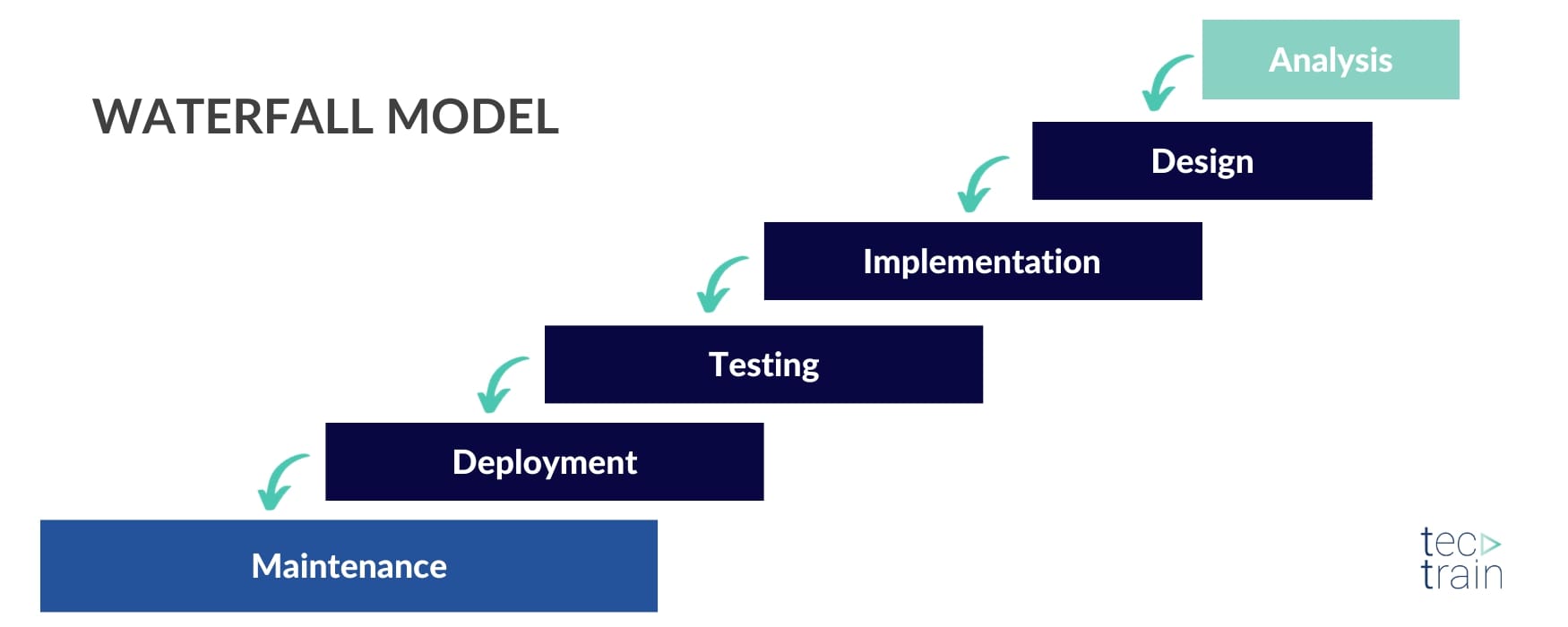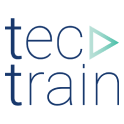Why do we need software development?
Today, software is a phenomenon that has taken its place in every aspect of our lives, from day-to-day to the most complex business processes - its impact is felt everywhere.
Companies need effective software systems for business process management and produce these systems through their information systems departments or purchase them from software companies. In both cases, creating the software requires a series of engineering and project management processes. When choosing the method of these processes, the characteristics of the software to be created such as size, complexity, and purpose, the structure of the organization and the project team that will create the software, and the resources that can be used are important.
In this blog, we explore the significance of software in our daily lives and the challenges it presents. You'll discover the core principles of Agile, its benefits, and how it compares to traditional methods. We'll also delve into the Agile life cycle, and popular frameworks, and acknowledge its limitations. By the end, you'll have a clear understanding of how Agile can revolutionize your approach to software projects, fostering collaboration, flexibility, and customer-centricity while delivering better products and enhancing customer satisfaction.

What is software development?
Software development provides guidelines for software development teams to create high-quality software. The software comprises not only lines of code written in a programming language but also concrete documentation. Software projects are specialized projects and, while they share the basics of project management, require special management techniques due to their content.
There are important differences that distinguish software projects from other projects. While the end product created in other technical fields has a physical existence, the product created in software projects is intangible as it is a manifestation of intellectual processes. This intangibility not only hinders the traceability of project management processes but also negatively affects the correct definition of requirements that should be defined at the beginning of the project.
It increases the uncertainty of the project as it is often difficult for the customer to precisely explain what they want. This problem generates more uncertainty than in general project management. Since uncertainties are higher than in general project management, the workload and cost estimation in software projects are more difficult to calculate, and the probability of failure is higher.
As projects carried out in other engineering fields hardly differ in terms of time and space, experience is gained in project management and this experience is applied to new projects. In software projects, the rapid development of information technologies and changing customer requirements can lead to changes within the ongoing project and nullify the experience gained from previous projects.
For these reasons, success rates in software projects are low. The criteria that determine the success of agile software development projects are the elements of time-resources-scope, also known as the project management triangle. CHAOS reports on the success rates of software projects have been published every year since 1994 by the Standish Group International. According to the latest report, "Beyond Infinity in 2020," the probability of success in agile projects is twice as high as in traditional projects.
What is agile in software development?
Agile Software Development definition
In the realm of software development, "Agile" isn't just a buzzword; it represents a fundamental mindset and a set of guiding principles that have revolutionized the IT industry. At its core, Agile emphasizes collaboration, flexibility, and customer-centricity. The days of rigid, lengthy development cycles are long gone. Agile promotes iterative, incremental progress, allowing teams to adapt to changing requirements and deliver value more rapidly.
Agile project management emerged as an innovative solution to the challenges that traditional project management often faced. The Agile movement began when a group of forward-thinking individuals gathered to explore new ways of approaching project management problems. These pioneers identified four core values crucial for project success and team effectiveness, encapsulated in the Agile Software Development Manifesto.

Agile software development's meaning contains a departure from traditional methodologies, emphasizing adaptability and continuous improvement, and offering a more responsive and efficient path to success.
After extensive deliberation, these experts reached a consensus on fundamental concepts and principles to address the software development challenges they had encountered throughout their careers. The codification of these principles into a single document marked a transformative shift in the software project development landscape.
Agile software development is characterized by an iterative and incremental approach, with self-organizing teams working collaboratively. It incorporates an effective management framework, resulting in timely, cost-effective, and high-quality solutions that cater to the evolving needs of stakeholders.
In summary, Agile in software development represents a departure from traditional methodologies, emphasizing adaptability and continuous improvement. This approach redefines project management norms, offering a more responsive and efficient path to success.
The Waterfall Model
The Waterfall model was described in a paper published by Dr. Winston Royce in 1970. Over time, the Waterfall method took the form we know today and became the basis for classical software development. In projects that use the Waterfall model, the phase ends are clearly defined and the project is carried out under intensive monitoring with controls such as strict reviews, intensive documentation, and management approval at each phase change.
Therefore, its implementation requires strict discipline. The main purpose of this approach is to establish factors such as scope, time, and resources from the outset, by not allowing changes during the project and neutralizing changes that pose a significant risk factor. When the Waterfall model emerged and the conditions were evaluated, business processes were not as dependent on information systems as they are today.
To eliminate the disadvantages of classical software development, 17 software development experts came together in 2001 to discuss the concepts around the idea of agile software development and create the Agile Manifesto. This laid the foundations and backbone of agile software development. Projects created based on the agile mindset are much more than classical software development today.

Agile software development vs. Waterfall
Classic project management is the oldest and basic model of software development, in which the activities carried out in software projects are carried out in successive phases. The first method of classic software development, which was implemented in the 1950s, was “Code and Fix”. It was based on the principle of coding the requirements directly and correcting the errors occurring in the process or after the product delivery without planning or design phase.
As a result of the software crisis in the 1960s, a software engineering conference was organized by the NATO Science Committee in Germany. The main topics of this conference are the definition of the concept of software development and the determination of the standards that should be used in the processes of software development.
Imagine building a new mobile app as our real-life project.
In the Waterfall approach, you'd spend significant time upfront planning every aspect of the app – its features, design, and architecture. Development only begins after this extensive planning phase. Testing occurs after development, and any issues found are addressed before deployment. Changes are challenging once development starts.
Now, consider Agile. You start with a high-level vision and a prioritized list of features. Instead of waiting, a small Agile team begins work immediately in short, focused sprints. After each sprint, you have a working part of the app. Feedback from users and stakeholders shapes the next sprint. This adaptability allows you to respond rapidly to changing needs and technology.
In summary, Waterfall relies on extensive upfront planning, while Agile values flexibility and continuous feedback. Your choice depends on project specifics. Agile excels when adaptability and quick responses are crucial, like in modern app development.
Featured resource:
Agile Project Management vs. Classic Project Management
The functioning of agile software development
Iterations that are used in agile methods are designed by the experience from previous iterations and the identified problems. Tasks that need to be done are prioritized according to their business value. The project team determines how best to do the work as part of the available resources and restrictions.
The team has to do certain tasks in a certain time (within the iteration time). It is solely the team with its strengths and weaknesses, that is responsible for the creation of the product that must be delivered at the end of the iteration.
Therefore, cooperation in the team is important. In this context, experimenting, prioritization, self-organization, time frame, and cooperation can be performed as basic principles on which agile methods are based.
In agile methods, activities of agile software development are carried out in iterative phases. As a result of these iterations, a useful product is created and the development processes are repeated taking into account customer or user feedback and, if necessary, changed requirements. These iterative processes are continued until the product that the customer wants is produced.
What are the values and principles of agile software development?
Agile software development takes an iterative approach to software development. Unlike a simple linear waterfall model, agile projects consist of a series of small cycles (defined as sprints in Scrum). Each one is a miniature project. It has a backlog and consists of design, implementation, testing, and deployment phases within the predefined scope of work. At the end of each sprint, a potentially shippable increment is delivered.
Thus, new features are added to the product with each iteration, resulting in gradual project growth. By reviewing feature development at every stage, the risk of delivering a potentially unsuccessful product is significantly eliminated.
Featured Source:
Agile Manifesto: 4 Core Values & 12 Principles
What are the phases of agile software development (life cycles)?
By aligning the phases of Agile software development with the PDCA cycle, teams can better focus on continuous improvement, which is a key aspect of both PDCA and Agile methodologies. This is especially relevant for organizations undergoing an Agile transformation, as it helps to instill a culture of iterative planning, development, evaluation, and adaptation.
The Plan-Do-Check-Act (PDCA) cycle is a management method used for the control and continuous improvement of processes and products. While PDCA is not inherently a part of Agile methodologies, the mindset aligns well with Agile principles, which also focus on iterative development and continuous improvement. Here's how you can map the phases of Agile software development to the PDCA cycle:
Plan
-
Requirements Gathering: In Agile frameworks like Scrum or Kanban, the Product Owner is responsible for gathering and prioritizing requirements, often in the form of user stories or use cases. This is part of the planning in the PDCA cycle.
-
Sprint Planning: In Scrum, the team holds a Sprint Planning meeting to decide what subset of the Product Backlog they will work on during the next sprint. This is also part of the "Plan" phase.
- Agile Transformation Note: Organizations undergoing Agile transformation often find that the "Plan" phase becomes more collaborative and less top-down, aligning more closely with Agile principles.
Do
- Design and Development: The development team proceeds to design and code the features or user stories selected for the current iteration. In Agile frameworks, this is an iterative process, often lasting 1-4 weeks per iteration (or sprint in Scrum).
Check
-
Testing: Agile frameworks emphasize continuous testing. Features are continuously tested to ensure they meet the desired criteria. This aligns with the "Check" phase of PDCA.
-
Review: At the end of each iteration, a review meeting is held. In Scrum, this is known as the Sprint Review. The team presents what they have built, and the Product Owner and stakeholders provide feedback.
- Agile Transformation Note: As organizations undergo Agile transformation, these review meetings often become more frequent and more collaborative, involving not just the team but also stakeholders and even customers.
Act
-
-
Retrospective: After the review, the team holds a Retrospective to discuss what went well, what didn't, and how they can improve. This is the "Act" phase in PDCA and is crucial for continuous improvement.
- Agile Transformation Note: The Retrospective is often a new addition for teams undergoing Agile transformation and serves as a cornerstone for fostering a culture of continuous improvement.
-
Deployment and Monitoring: Features are deployed to a staging or production environment, and their performance is monitored. Any issues or feedback are used to plan the next iteration, closing the PDCA loop.
- Agile Transformation Note: Organizations transitioning to Agile often move towards more frequent deployments and real-time monitoring, aligning with both the "Act" phase of PDCA and Agile principles of rapid, flexible response to change.
-
Advantages of agile software development
The benefits of Agile Software Development extend to both the company and its customers. Agile methodologies empower organizations to deliver better products, reduce costs, and increase customer satisfaction.
- Better products are produced. The opportunity to provide software before it is finished enables the team to react better to customer feedback and inquiries. This is reflected in the quality.
- The possibility of increasing productivity and using feedback by focusing on the functions that the users want makes the process more cost-effective.
- User satisfaction is at the highest level. Satisfaction is high because agile software development is oriented toward customer feedback.
- Extended control mechanisms are available. Continuous improvement, iteration, and cooperation between teams keep control at a high level.
- Better product predictions are achieved.
- Offers improved flexibility and speed.
What are the popular agile software development frameworks?
● Scrum
● Extreme programming (XP)
● Kanban
● Dynamic Systems Development Method (DSDM)
● Feature Drive Development (FDD)
● Lean software development (LSD)
● Adaptive software development (ASD)
● Crystal agile framework
● The scaled agile framework (safe)
Featured Resource:
Top Agile Frameworks in Software Engineering for 2024
Restrictions on agile software development
Although agile software development today has many advantages over classic software development, it is not free of restrictions. However, these restrictions are not restrictions that, like conventional projects, result from the structure of the system.
- Since the processes in agile software development are communication-centered, the requirements may not be correctly defined if communication between the customer and the team does not work properly. This can disturb the software development process.
- Customers who cannot precisely determine their priorities and who often want to change the priorities on their to-do list can have a negative impact on planning.
- Large and complex systems that require functional integrity may not be divided into parts that are suitable for iterations.
Conclusion
In summary, agile software development can be an effective approach to developing high-quality software in a short period of time. By using agile methods, teams can react faster to changes, improve the quality of the software, and achieve higher customer satisfaction.
If you want to learn more about how agile software development works and how to introduce this method to your team, you should visit our Scaled Agile Framework page. There you will find various SAFe courses, including our "SAFe Agile Software Engineering" course, which teaches you the basics of agile software development.
And if you are also interested in other IT topics, we have a variety of training courses and certifications on our "Academy" page that can help you expand your knowledge and skills. Have a look and discover the possibilities that are available to you!






%20copy.png)



